Contents
- The Dozen Easiest-to-Recognize, Most Widespread, Most Versatile Wild Foods
of Washington
Foraging Washington
Finding, Identifying, and Preparing
Edible Wild Foods
Christopher Nyerges


An imprint of Globe Pequot
Falcon and FalconGuides are registered trademarks and Make Adventure Your Story is a trademark of Rowman & Littlefield.
Distributed by NATIONAL BOOK NETWORK
Copyright 2017 by Rowman & Littlefield
All rights reserved. No part of this book may be reproduced in any form or by any electronic or mechanical means, including information storage and retrieval systems, without written permission from the publisher, except by a reviewer who may quote passages in a review.
Photos by Christopher Nygeres unless otherwise noted
Chart on page 14 by Thomas Elpel, reprinted with permission.
Maps: Melissa Baker Rowman & Littlefield
British Library Cataloguing-in-Publication Information available
Library of Congress Cataloging-in-Publication Data
Names: Nyerges, Christopher.
Title: Foraging Washington : finding, identifying, and preparing edible wild foods / Christopher Nyerges.
Description: Guilford, Connecticut : FalconGuides, [2017] | Includes bibliographical references and index.
Identifiers: LCCN 2016049132 (print) | LCCN 2016057307 (ebook) | ISBN 9781493025336 (pbk. : alk. paper) | ISBN 9781493025343 (e-book)
Subjects: LCSH: Wild plants, EdibleWashington (State) | Plants, EdibleWashington (State)
Classification: LCC QK98.5.U6 N9395 2017 (print) | LCC QK98.5.U6 (ebook) | DDC 581.6/3209797dc23
LC record available at https://lccn.loc.gov/2016049132
 The paper used in this publication meets the minimum requirements of American National Standard for Information SciencesPermanence of Paper for Printed Library Materials, ANSI/NISO Z39.48-1992.
The paper used in this publication meets the minimum requirements of American National Standard for Information SciencesPermanence of Paper for Printed Library Materials, ANSI/NISO Z39.48-1992.
Printed in the United States of America
To Dr. Enari, I Dedicate This Book on Washington Wild Foods.
I also had many other mentors, teachers, and supporters along the way. These include (but are not limited to) Dr. Luis Wheeler (botanist), Richard Barmakian (nutritionist), Dorothy Poole (Gabrielino chaparral granny), Richard E. White (founder of WTI, who taught me how to teach, and how to think), John Watkins (a Mensan who knew everything), and Mr. Muir (my botany teacher at John Muir High School). These individuals all imparted some important aspects to me, and they have all been my mentors to varying degrees. I thank them for their influence. Euell Gibbons also had a strong influence on my early studies of wild food, mostly through his books; I met him only once.
Nearly twenty years ago, I met John Kallas, who I regard as the top wild-food man of the Pacific Northwest. Kallass field trips, workshops, and books are strongly recommended for anyone living in Washington and the surrounding area. With a doctorate in botany, he is a remarkable resource for the Northwest.
Of course, there have been many others who taught me bits and pieces along the way, and I am grateful to everyone whose love of the multifaceted art of ethnobotany has touched me in some way. Some of these friends and strong supporters have included Pascal Baudar and Mia Wasilevich, Peter Gail, Gary Gonzales, Dude McLean, Alan Halcon, Paul Campbell, Rick and Karen Adams, Barbara Kolander, Jim Robertson, Timothy Snider, and Dr. Wakeman.
I also want to extend a special thanks to my beloved wife, Helen, for her support of this project!
I also wish to give special thanks to William Schlegel, who assisted with many of the details of this manuscript. I also thank the two other botanists who assisted with this project, who chose to remain unnamed.
Photo Credits
Yes, I took many of the photographs in this book, but I couldnt do it all by myself. Rick Adams deserves special thanks for the many trips we took together to get the photos. Other folks also contributed photos including my wife Helen. I also thank Zoya Akulova, Algie Au, Dan Baird, Jefferey Barrett, Matt Below, Margo Bors, Barry Breckling, Tom Elpel, Roger George, H. Tim Gladwin, Gary Gonzales, William J. Hartman, Barbara Kolander, Bob Krumm, Louis-M. Landry, Jeff Martin, Steve Matson, Keir Morse, Julie Kierstead Nelson, Jean Pawek, Jim Robertson, Vickie Shufer, Bob Sivinski, Vernon Smith, Robert Steers, Simon Tonge, Dr. Amadej Trnkoczy, and Mary Winter.
The identification, selection, and processing of any wild plant for use as food requires reasonable care and attention to detail since, as indicated in the text, certain parts are wholly unsuitable for use and, in some instances, are even toxic. Because attempts to use any wild plants for food depend on various factors controllable only by the reader, the author and Globe Pequot Press assume no liability for personal accident, illness, or death related to these activities.
This book is a work of reference. Readers should always consult an expert before using any foraged item. The authors, editors, and the publisher of this work have checked with sources believed to be reliable in their efforts to confirm the accuracy and completeness of the information presented herein and that the information is in accordance with the standard practices accepted at the time of publication. However, neither the authors, editors, and the publisher nor any other party involved in the creation and publication of this work warrant that the information is in every respect accurate and complete, and they are not responsible for errors or omissions or for any consequences from the application of the information in this book. In light of ongoing research and changes in clinical experience and in governmental regulations, readers are encouraged to confirm the information contained herein with additional sources. This book does not purport to be a complete presentation of all plants, and the genera, species, and cultivars discussed or pictured herein are but a small fraction of the plants found in the wild, in an urban or suburban landscape, or in a home. Given the global movement of plants, we would expect continual introduction of species having toxic properties to the regions discussed in this book. We have made every attempt to be botanically accurate, but regional variations in plant names, growing conditions, and availability may affect the accuracy of the information provided. A positive identification of an individual plant is most likely when a freshly collected part of the plant containing leaves and flowers or fruits is presented to a knowledgeable botanist or horticulturist. Poison Control Centers generally have relationships with the botanical community, should the need for plant identification arise. We have attempted to provide accurate descriptions of plants, but there is no substitute for direct interaction with a trained botanist or horticulturist for plant identification. In cases of exposure or ingestion, contact a Poison Control Center (1.800.222.1222), a medical toxicologist, an appropriate heathcare provider, or an appropriate reference resource.
Contents
The Dozen Easiest-to-Recognize, Most Widespread, Most Versatile Wild Foods
of Washington
Acknowledgments
After I had already begun my lifelong study of botany and ethnobotany, I had the very good fortune in approximately 1975 to meet Dr. Leonid Enari. Dr. Enari was the senior biologist at the Los Angeles County Arboretum and taught his course on Edible, Medicinal, and Poisonous Plants as well as taxonomy. His knowledge was astronomical.

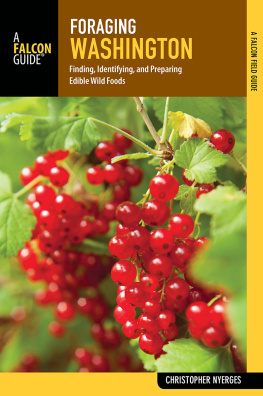

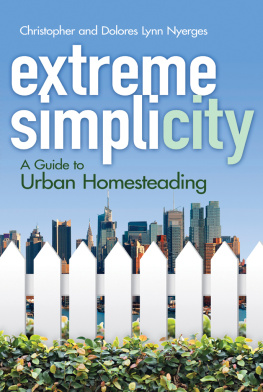

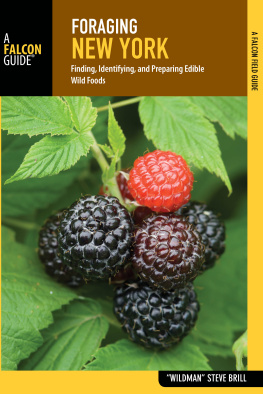
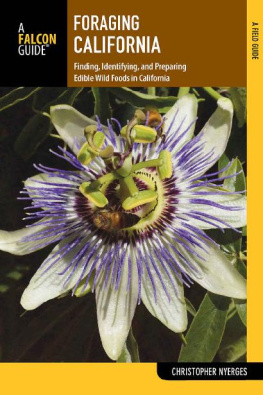
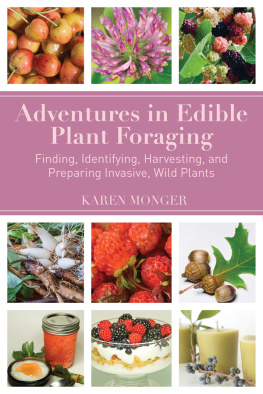
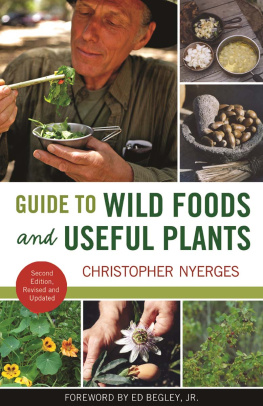



 The paper used in this publication meets the minimum requirements of American National Standard for Information SciencesPermanence of Paper for Printed Library Materials, ANSI/NISO Z39.48-1992.
The paper used in this publication meets the minimum requirements of American National Standard for Information SciencesPermanence of Paper for Printed Library Materials, ANSI/NISO Z39.48-1992.